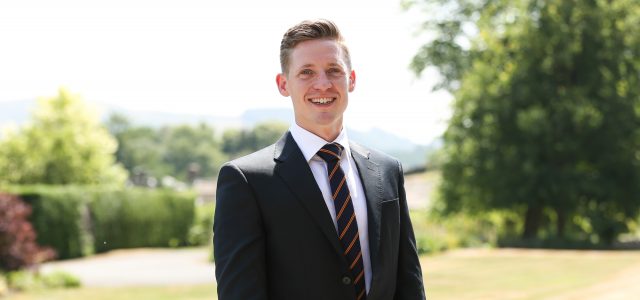
LIGHTS CAMERA ACTION
Set designer Tom Coxon chats with Lauren Molyneux and discusses his experiences in working with large-scale film and television productions
Tom Coxon has worked on the set of Disney’s Maleficent 2 and the BBC drama series McMafia, which involved around 80 different locations around London. As a young freelance designer, he moves between different productions and has worked on Solo: A Star Wars Story and Fantastic Beasts and Where to Find Them.
When did all this start for you, Tom?
“I suppose my starting point was my undergraduate degree – I studied Architecture at Central Saint Martins University of the Arts in London. I really enjoyed my course, but in my third year it shifted into a focus on industry practice and I found that very dry and not very enjoyable. I decided to leave it behind and began to do some work in the theatre and I really started to build on my set-design skills. I managed to gain a position at the National Theatre for a period which was amazing, but it wasn’t quite as ambitious as I had hoped.
“I hadn’t had any exposure to working in film productions before, so I decided to take up some floor-running jobs to gain some experience. From there I developed a real excitement for film. Having won an award from The Sunday Times for some theatre work I had completed, I decided to pursue an MA in Production Design for Film and Television at the Royal College of Art. It was a two-year course and it really drove the technical aspects of what I had learned in my BA but rooted them in narrative, which is what had been missing for me in architecture.”
Do you think you have settled on your career path now?
“Yes, definitely! I am working on a freelance basis at the moment which I love, because moving between different productions and organisations, meeting new people each time and working within new teams and environments means that the dynamic is always changing and I am always kept on my toes, which is very exciting.”
What was it like working on your most recent project, Disney’s Maleficent 2?
“It was absolutely brilliant. I thoroughly enjoyed working for such a huge organisation, especially on a project that was so focused around narrative and storytelling. My day-to-day was fantastic as I was fortunate enough to work with Patrick Tatopoulos, who is famous for his work on Godzilla and Dark City, so I learned a lot and it was a really insightful experience for me.
You have also worked on the BBC drama series, McMafia. What was that experience like?
“McMafia was such a fast-paced project because it was filmed across so many different locations. I was in the London team and we were given huge scripts to read, but really we were only responsible for a proportion of the design, which was for the London-based settings. What I found really interesting about the project was how all of those different locations fed into the creation of this one narrative world. I think we shot around 80 locations in six weeks, which is incredible. Every day brought a new set, so we were constantly being challenged and pushed, and it was incredibly thrilling and a complete contrast to my experience of working on Maleficent 2, where the shoots were around four months long but only involved 10 to 12 locations.”
What would you say is the biggest difference between working on television and film projects?
“I would say the largest difference is really on the financial scale. As well as this, my job differs quite dramatically depending on whether the production I’m working on is for television or film. Film projects have a tendency to be studio-based, so the emphasis for my job is on an entirely built environment, whereas in television a lot of the content will be shot on location. For example, big HBO productions like Game of Thrones will be based around a pre-existing set, and the job of the arts department would be to transform that set as best they could to situate it firmly within the world of the show, dressing the existing space to make it fit rather than building it from scratch.”
Can you tell me a bit more about the creative process in your role?
“I work within a team which is always led by a lead production designer. Usually, the team will be given the script as a starting point, and after that it is a collaborative effort to produce or transform a set following cues from the script. Within the team there are different roles. Some roles will have the responsibility of drawing and mapping ideas, the art director has more say over creative matters, and the set designer is responsible for technical aspects. But there is a lot of room for progression, and I would love to progress further into design one day. It would be great to have more creative responsibility over the larger world of the narrative. And now we can use CGI to design entire landscapes, the job becomes even more exciting – with CGI those are huge environments, not just rooms or buildings, but huge worlds that are being imagined and created.”

